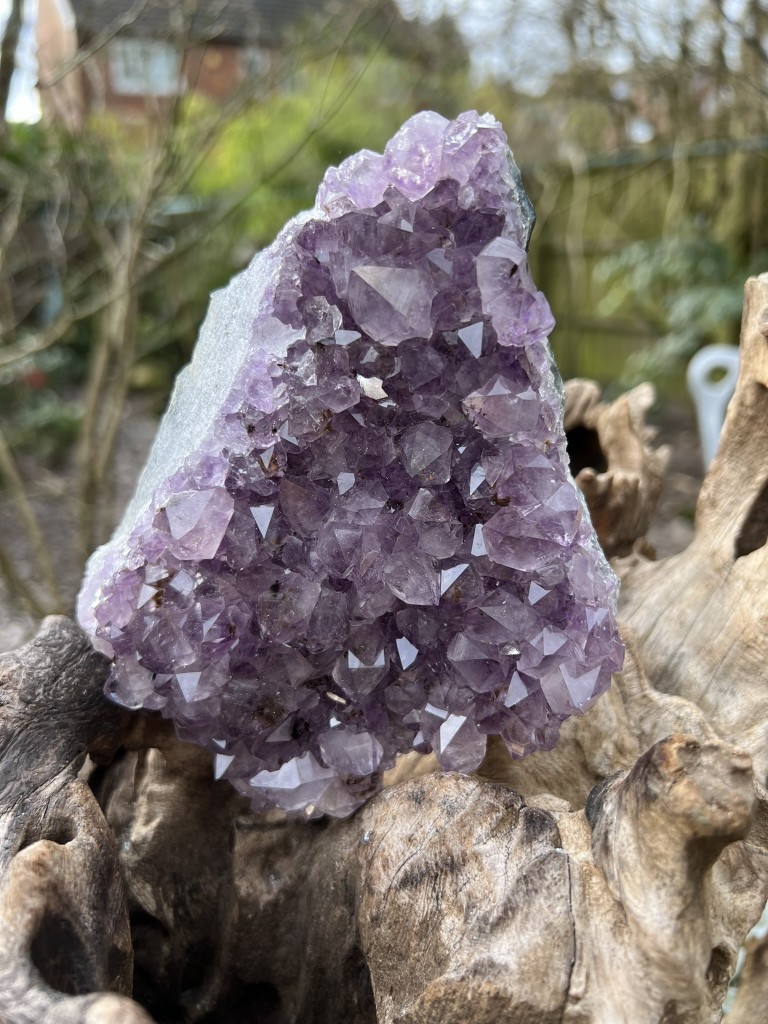
Our Shop
Amethyst Geode Cluster Uruguayan 600g 9
£27.99
Uruguayan Amethyst cluster 600g weighing 117:120:40mm Smoky Quartz Properties and Meanings Smoky quartz is a form of quartz, one of the most common and popular crystals in nature. While traditional quartz has a clear or whitish cloudy colour, smoky quartz has a grey colour. Some types of smoky quartz are very clear, while others are almost opaque, and some pieces are nearly black. Quartz is the second most common mineral on Earth, after feldspar (the raw material used in glass, ceramics, plastics, paints, rubbers, and practically everything else you can imagine). About twenty percent of the Earth’s crust is made up of quartz! Quartz comes in a huge variety of colours, and smoky quartz is probably the third most recognizable mineral that bears the name, after clear quartz and rose quartz. It is made mainly of silicone dioxide, which is the main component in sand (quartz crystals are basically huge grains of sand). The distinctive dark colour of smoky quartz comes from free silicone deposits in it. The depth and consistency of the crystal’s colour depends on the quantity of free silicone in it. When it is extremely dark and almost opaque, it is called morion (which is also the name for smoky quartz in both German and Spanish). Smoky quartz is found all over the world, yet it does not enjoy the cultural prestige that many crystals, even its own sister clear quartz, have gained over the centuries. Historically, its uses have been quite practical – the first sunglasses were invented in twelfth century China, and used pieces of smoky quartz for lenses! It is also a popular stone in jewellery, including traditional Scottish kilt pins and ceremonial knives. Just like Selenite, it is a highly grounding stone, ruling the root chakra, and improving its user’s connection with the physical world. This is no surprise, given that this mineral makes up so much of the earth’s crust.
